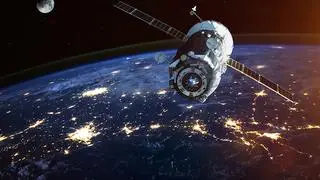India's second lunar exploration mission - Chandrayaan - 2 is targeted to be launched by 2017-18 with complete indigenisation, informed Indian Space Research Organization (ISRO) chairman A S Kiran Kumar here on Wednesday.
"With changes in the planned configuration for Chandrayaan-2, where originally the lander was supposed to come from Russia. Now we are developing our own lander. So it will be completely indigenous system," Kumar told media persons ahead of an awards function by Gujarat Innovation Society.
"For the launch of Chandrayaan-2 the target is sometime in 2017-18," said Kumar adding that meanwhile India will see about seven space launches.
Of the seven launches, Kumar noted that one has already been done last month in March. "Apart from that we are now getting ready for DMC- Disaster Monitoring Constellation satellite for Surrey Space Technology, followed by GSLV Mk-2 which is going to be launched," he said.
ISRO has also lined launch of IRNSS (Indian Regional Navigate Satellite System) 1E and 1F. "On March, 28 we launched the fourth IRNSS. In fact today we completed all the in-orbit tests that the satellite has actually gone into the right place. All the payloads have been turned on and they have been tested."
"Once you have the four navigation satellites, you can independently determine your physical position on ground. Latitude, longitude and height using a receiver signal," he added.
Another in the line is the Astrosat to be launched in 2015 with a multi-wavelength telescope system which will be carried on a single platform. This will be unique observation systems to look at celestial objects thereby encouraging students to take unique observations from sky. With the new satellite, students can decide what celestial object they want to look at. Astrosat will carry multi-frequency telescope systems on a platform.
GSAT-15 will be launched this year. "The remaining six are from our own PSLV and GSLV Mk-2."
"Also we will have Reusable Launch Vehicle-Technology Demonstration Program or RLV-TD's first version or first trial of hypersonic experiment during this year," said Kumar.
He stressed the ISRO was focusing more on the critical technologies and will continue to capitalise on the technology spin-offs. Presently, ISRO is working on composite material, artificial limbs, mentioned the chairman.








Comments
Comments have to be in English, and in full sentences. They cannot be abusive or personal. Please abide by our community guidelines for posting your comments.
We have migrated to a new commenting platform. If you are already a registered user of TheHindu Businessline and logged in, you may continue to engage with our articles. If you do not have an account please register and login to post comments. Users can access their older comments by logging into their accounts on Vuukle.